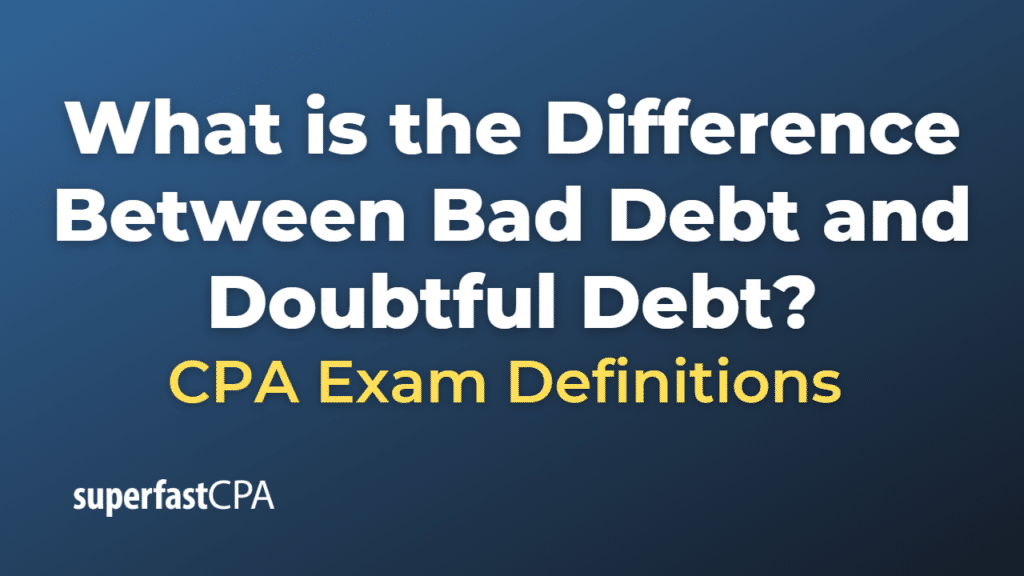Difference Between Bad Debt and Doubtful Debt
Bad debt and doubtful debt are terms used in accounting to classify debts that a company is unlikely to collect from its customers. Here’s how they differ:
- Bad Debt: This refers to the receivable amount that has essentially been deemed uncollectible by the company. The company has exhausted all efforts to collect payment from a customer and concludes it will never receive the payment. Therefore, it writes off the debt as a loss in the income statement under “bad debt expense”. The corresponding accounts receivable is also reduced by the same amount. Bad debts are often associated with extending credit to customers.
- Doubtful Debt: On the other hand, doubtful debt is a receivable that might become a bad debt at some point in the future, but hasn’t yet specifically been identified as such. This term is used when a company believes a certain percentage of its receivables will not be collected, although it does not yet know which specific receivables will not be paid. Companies typically set up a “provision for doubtful debts”, which is an estimated amount set aside to cover potential losses from debts that will become uncollectible in the future.
In summary, the difference between bad debt and doubtful debt is essentially a matter of certainty: bad debts are certain to be uncollectible, while doubtful debts may become uncollectible in the future.
Example of the Difference Between Bad Debt and Doubtful Debt
Let’s consider a company called FurnitureCo, which sells furniture to its customers on credit.
Bad Debt: Suppose that FurnitureCo sold a luxury couch worth $2,000 to a customer six months ago. Despite numerous attempts to collect the payment, the customer has declared bankruptcy and cannot pay. FurnitureCo decides that this receivable is uncollectible and classifies it as a bad debt. This amount would be written off as a bad debt expense in FurnitureCo’s income statement, and their accounts receivable would be reduced by $2,000.
Doubtful Debt: On the other hand, let’s say FurnitureCo has total credit sales of $500,000 for the year. Based on past experience, FurnitureCo estimates that 1% of its credit sales will not be collectible, even though it does not yet know which specific customers will fail to pay. FurnitureCo would create a provision for doubtful debts of $5,000 (1% of $500,000). This is a contra-asset account that is deducted from total accounts receivable on the balance sheet. When a specific account is identified as uncollectible in the future, it will be written off against this provision.
In this example, the bad debt is a specific, known debt that is uncollectible, while the doubtful debt is a provision for potential losses that the company expects based on its past experience.













